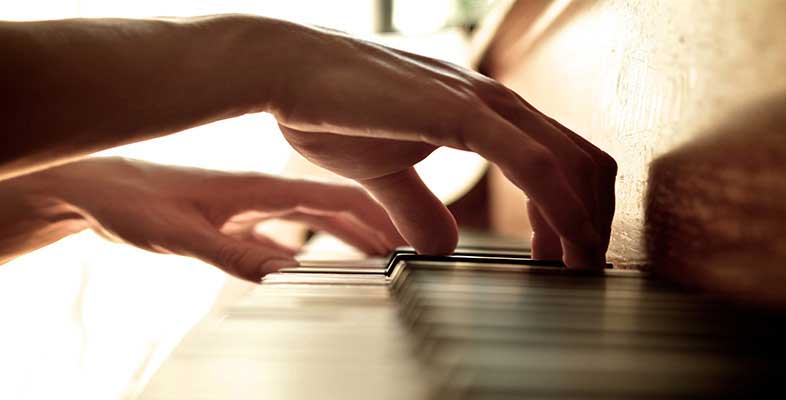3.8 More time signatures: compound time
The time signatures considered up to now – 2/4, 3/4, 4/4, 2/2, 3/2 and 3/8 – are all examples of simple time. In simple time, each beat can always be divided into twos, or multiples of two. And simple time signatures are described fully according to how many beats in a bar there are as follows:
- 2/4 and 2/2 are called simple duple time since there are two beats to each bar
- 3/8, 3/4 and 3/2 are called simple triple time since there are three beats to each bar, and
- 4/4 is called simple quadruple time since there are four beats to each bar.
Example 25 a shows a bar of 3/4 time, where there are three beats to the bar, and each beat is divided into two.
Example 25 (a)

When the beat is divided into threes, the term compound time is used.
For example:
- in 6/8, there are 6 quavers per bar, but these 6 quavers are grouped in two groups of three – so it is called compound duple time. 6/4 is also called compound duple time, there are 6 crotchets per bar and these 6 crotchets are grouped in two sets of three.
- In 9/8 there are 9 quavers per bar, grouped in three groups of three – so it is called compound triple time.
- In 12/8 time there are 12 quavers per bar, grouped in four groups of three – so it is called compound quadruple time.
Example 25 (b) shows a bar of 6/8 time. There are two beats to the bar, and each beat is divided into three.
Example 25 (b)

But what is the reason for this different way of grouping the notes in each beat in compound time? This is because in compound time signatures, the beat is a dotted note such as a dotted minim (in say, 6/4) or a dotted crotchet (in, say, 6/8) rather than a minim or a crotchet in simple time signatures such as 3/2 or 3/4. We can see how this affects the beat division if we consider the bars of 3/4 time and 6/8 time together.
Examples 25 (a) and (b)

If we count the number of quavers in a bar of 3/4 and in a bar of 6/8, the answer is the same, six. However, in 3/4 there are three crotchet beats per bar, each beat divided into two quavers. In 6/8 there are two dotted crotchet beats per bar, each beat divided into three quavers. So 3/4 is simple triple time and 6/8 is compound duple time. In both art and popular music, composers have explored the variable beat produced by moving between these two time signatures.
